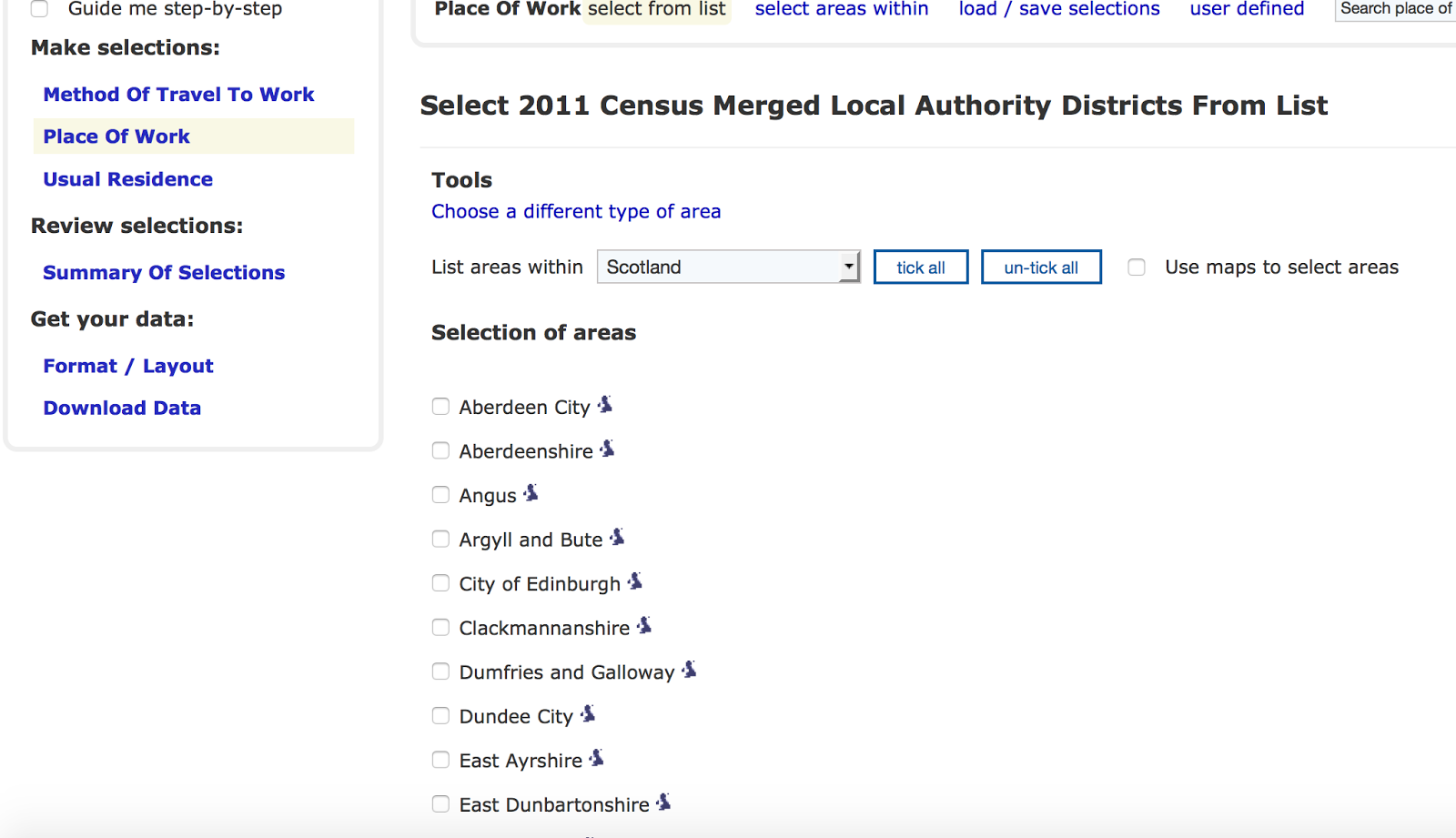<- Art work from the Port Glasgow station underpass . Produced as part of an NHS Mental Health Group project.
1 - www.nomisweb.co.uk
2 - Move down page to 2011 CENSUS STATISTICS
3 - Select Origin-Destination Data (Also Known as Flow Data)
4 - Select table WU03UK from the list of 20 tables
5 - Select 'Explore in detail' from left hand side of screen
6 - Make selections of each of the headings in the next screen
7
- Method of travel
8 - Place of work
- choose Scotland then Inverclyde, Renfrewshire and Glasgow for example
9 - Usual residence
Choose Scotland then Inverclyde
10 - Finally - Download Data
So
- 19,352 residents of Inverclyde travel to work within Inverclyde, 11,463 travelling by car.
- 4,235 residents of Inverclyde travel to work in Glasgow City, 1,269 by train.
- 3,152 residents of Inverclyde travel to work in Renfrewshire, 359 as passengers in a car.

























